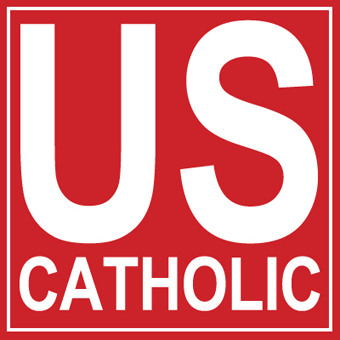When the Claretians started printing a magazine 75 years ago, they couldn’t have imagined Internet publishing, let alone web 2.0 tools and social networking. U.S. Catholic editors, however, have been on the forefront of changes in publishing.
Back in the early months of 1995, I had a conversation with Tom McGrath, then the editorial director of Claretian Publications. I had been avidly tracking developments in the emerging world of electronic communication. This public entity known as the Internet had been evolving rapidly from the binary skeleton of ARPANET, what had been a military and academic system that primarily connected university servers together in a national web. The World Wide Web had emerged that year with the release of Mosaic, an “internet browser.” What’s that? We would all soon know.
The previous three or four years had seen a rapid proliferation of Internet “communities” established by Prodigy, America Online, independent community bulletin board systems, and a gang of other bald copycats and bold innovators who were all trying to make sense out of this thing called the Internet. Pretty much all of those closed networks would be swept away by the electronic commons that was virtually opened with the deployment of programs like Mosaic and the soon to follow Netscape, programs that allowed anyone (even non-coders!) with a computer and a modem to begin intellectually grazing among the vast commons of the World Wide Web.
From the beginning it was clear that the Web and the simple coding language of html created a new opening for publishers to reach not only their existing audience but an essentially unlimited potential readership. Tom McGrath was wise enough to understand that U.S Catholic and our sister publication Salt of the Earth needed to be part of this communication revolution.
His only tactical error was asking me to help get Claretian Publications online when he should have been looking for a 15 year old at any area high school. By virtue of being the only editor who had a modem (2400 baud!) on his home system and an Internet account, I became the local expert for the Claretians. Fortunately for me hardly anyone else knew what they were doing on the Web as it quickly became known.
I taught myself the basic language and began putting web pages together for the 1995 debut of U.S. Catholic online. I had been writing for Salt of the Earth for several years by then, but if I’m not mistaken the first site we put together and launched with our own homebrewed Internet service provider included the second article I had written for U.S. Catholic: “Dispatches from Decatur: Community is the first casualty in America’s labor wars.”
There wasn’t much else to the site, just an electronic reprint of some of the material we had previously published in the magazine. That format was pretty much retained over the next several years. Salt of the Earth was launched as a full-scale web-only product (unfortunately we weren’t able to keep good old SOTE going).
But U.S. Catholic online remained something of a mixed basket-case, somewhere in between the print and Internet worlds. We may have tweaked the design every so often and attempted to improve the way readers could interact with customer service and our editors and writers, but it would take another revolution in Internet publishing to profoundly alter what had been fundamentally a passive e-magazine form of Internet publishing we had adopted, like many other old-school print houses.
With the beginning of the so-called Web 2.0 era, perhaps only now nearing its own terminal crisis and recreation point, U.S. Catholic vastly expanded its ambitions and presence on the web. We begin experimenting with new widgets to provide better navigation and news resources; video reports began haltingly (quite literally, the Internet bandwidth was not always up to video standards), and we became among the first Catholic publishers to tap into the open source world of Content Management Systems, relaunching the site in 2008 using the Drupal web publishing platform.
That system created wholly new opportunities for user interaction with editors and propelled USCatholic.org into its own as a communications vehicle, intimately connected to its parent U.S. Catholic magazine, but something also unique to itself where new formats–audio and video, multimedia slideshow–and daily news and opinion updates have transformed stodgy old U.S. Catholic online into a formidable web presence of its own.
These days, as I stop by U.S. Catholic‘s Facebook page or receive hourly updates via Twitter, I’m never far from events in Chicago’s Catholic news central.
I look forward to see where USCatholic.org is heading next.
Kevin Clarke brought U.S. Catholic online in the 1990s and led the relaunch of USCatholic.org in 2008. He continues to write the Margin Notes column and blog from New York.












Add comment